- Home
- slideshows
- miscellaneous
- 11 of the tallest animals on Earth
11 of the tallest animals on Earth
The giraffe is the tallest animal on Earth.

Elephants can get up to 13 feet (4 meters) tall.
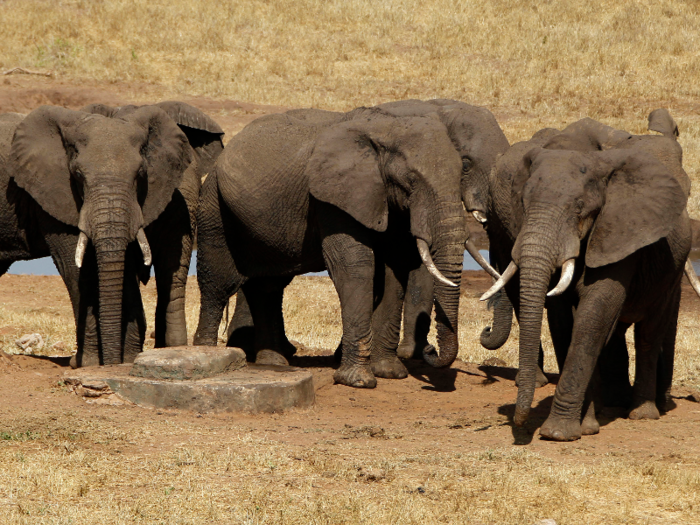
Elephants primarily dwell in the savannas of sub-Saharan Africa. They can live up to 70 years.
Though elephants are native to 37 African countries, the African Wildlife Foundation estimates that there are only about 415,000 elephants left on Earth. About 8% of the world's population of elephants is poached annually, and they are slow to reproduce — elephant pregnancies last 22 months.
The ostrich is the world's tallest bird. It can grow up to 9 feet (2.7 meters) tall.
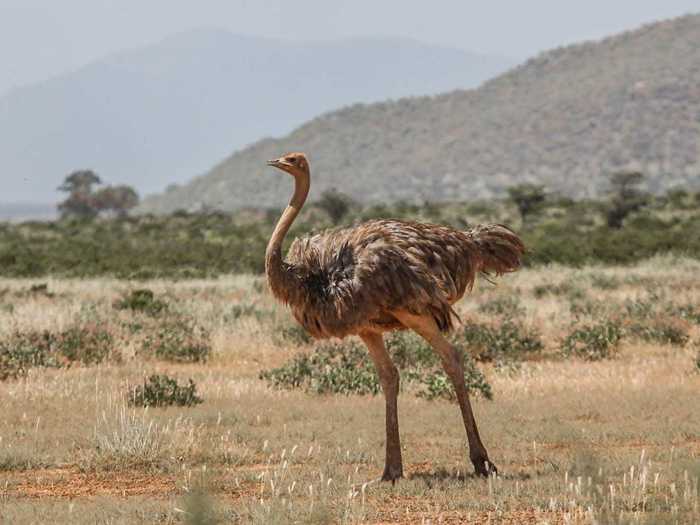
Ostriches are large flightless birds that are native to more than 25 countries in Africa, including Zambia and Kenya, and the westernmost part of Asia (in Turkey), but they can be found all over the world. They can be raised for their meat, though wild populations exist in Australia.
According to the African Wildlife Foundation, ostriches don't have teeth, but they do have the largest eyeballs of any land animal.
Brown bears can reach intimidating heights on their hind legs, standing between 7 and 10 feet (2.1 to 3 meters) tall when upright.

Brown bears can weigh between 500 and 900 pounds (227 to 408 kilograms), though the heaviest bear ever recorded weighed more than 2,500 pounds (1,134 kilograms).
A moose grows to between 5 and 6.5 feet (1.5 to 2 meters) tall on average. That does not include its antlers, which can measure 6 feet (1.8 meters) across.
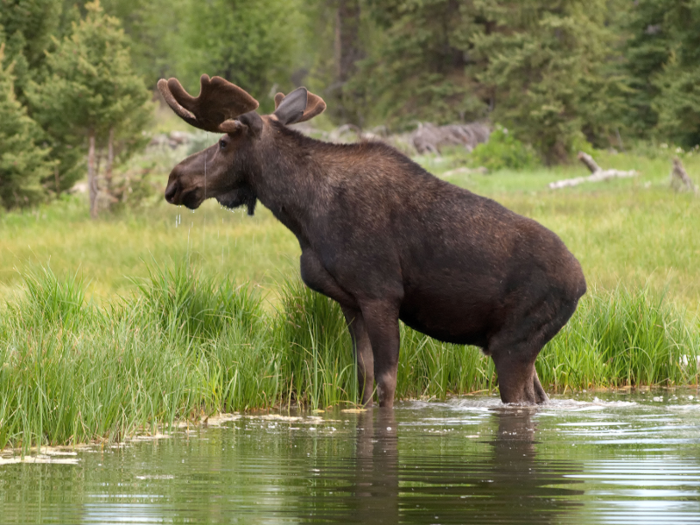
According to National Geographic, moose are the largest of all deer species. But despite their enormous size – many moose weigh about 1,800 pounds (816.5 kilograms) – these creatures are vegetarians. They eat shrubs, pine-cones, moss, and aquatic plants.
The world's largest horses can stand taller than 6 feet.
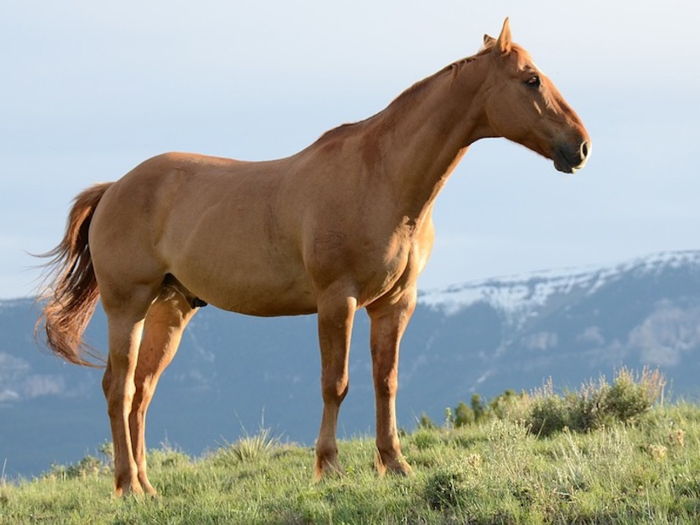
A horse's height is generally measured at its "withers," the place where the neck meets the shoulders. When you consider that a horse's head usually stands considerably higher than its shoulders, it's easy to see how even medium-sized horses can dwarf a human.
Most riding horses stand about 5 feet (1.5 meters) at the withers.
There are two types of camels. Dromedary camels — the kind with one hump — stand around 6.5 feet (2 meters) tall at the shoulder.
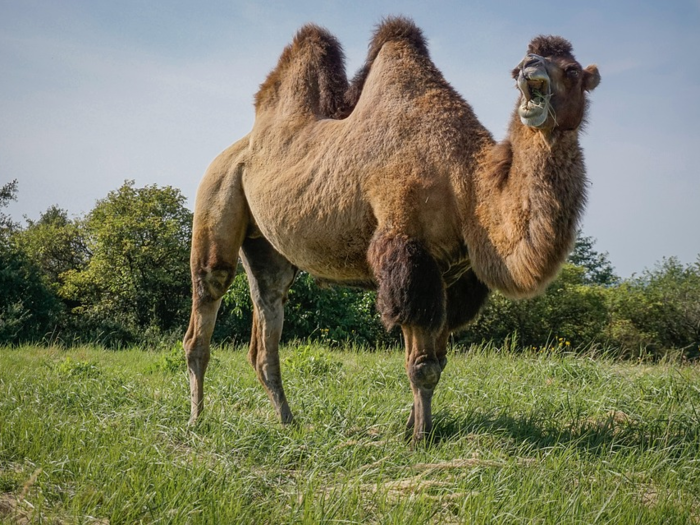
Camels are two-toed mammals. They don't store water in their humps as many people believe – those humps are filled with fat, which can be used as an energy source.
Whereas Dromedary camels have one hump, Bactrian camels have two humps and can grow to about 6 feet (1.8 meters) tall at the shoulders, according to the San Diego Zoo.
Camels can drink up to 40 gallons (151 liters) of water in one sitting, according to The Society for the Protection of Animals Abroad.
Bison, the national mammal of the US, can stand 6 feet (1.8 meters) tall at the shoulders.
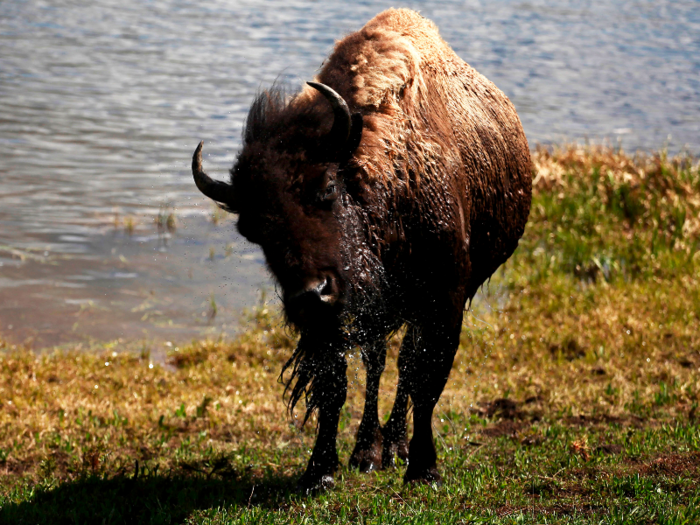
Bison are massive creatures that can weigh up to 2,000 pounds (907 kilograms).
Though they were perilously endangered in the late 1800s – there were just a few hundred left in the US at that time – they are now more than 10,000 bison roaming in protected areas. In 2016, President Barack Obama signed the National Bison Legacy Act, which officially made the American bison the national mammal of the US.
The rhinoceros is the second largest creature on four legs. It can stand almost 6 feet (1.8 meters) at the shoulder.
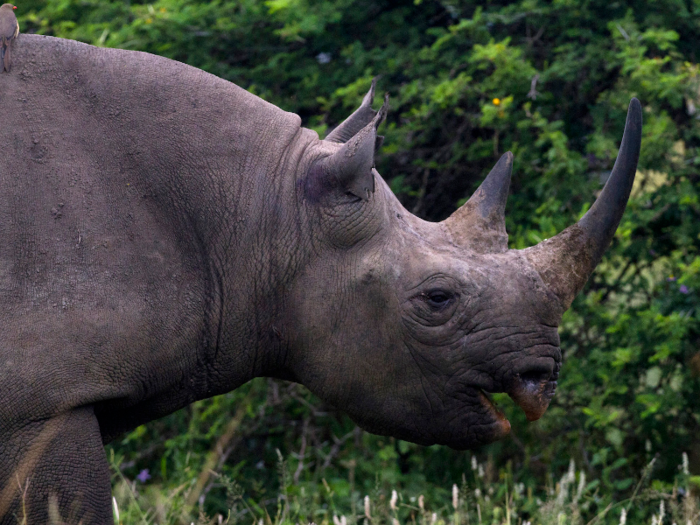
According to Rhino Conservation Botswana, the white rhino is the second largest land animal after the elephant. It can weigh up to 7,700 pounds (3492.7 kilograms).
White rhinos communicate by puffing and panting, and are known to mark their territories with large dung piles.
African buffalo can stand over 5 feet (1.5 meters) at the shoulder and weigh thousands of pounds.
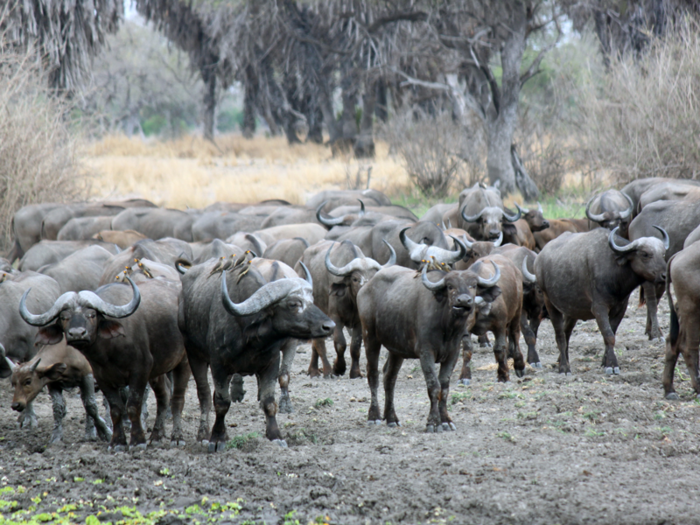
The African buffalo is sometimes confused with the American bison, but they're very different.
The African buffalo has a long, stocky body that can weigh up to 2,200 pounds (998 kilograms). Because they're frequently hunted, their numbers are decreasing, but not yet to a concerning level.
The average hippo is between 4.9 and 5.4 feet (1.5-1.6 meters) tall at the shoulder. They are uniquely adapted to life in the water.
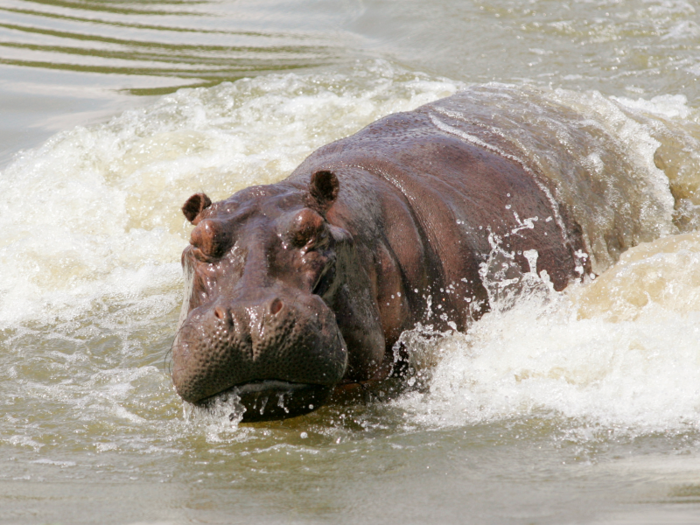
According to the San Diego Zoo, the ears of the common hippo fold into a recessed area in its head when the hippo is submerged in order to prevent water from getting inside them.
Hippos can also hear sounds underwater when their lower jaws are submerged.
Popular Right Now
Popular Keywords
Advertisement